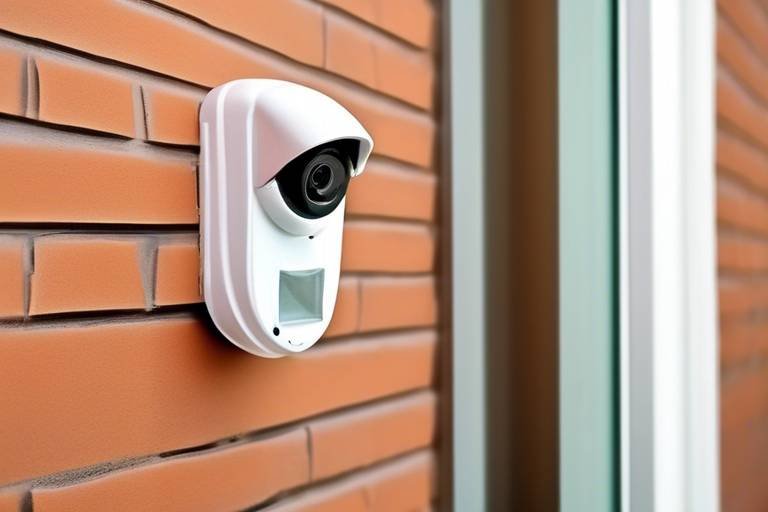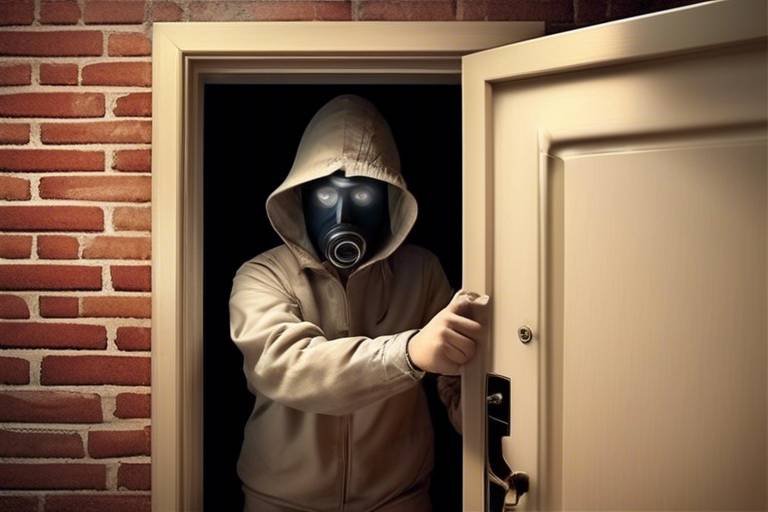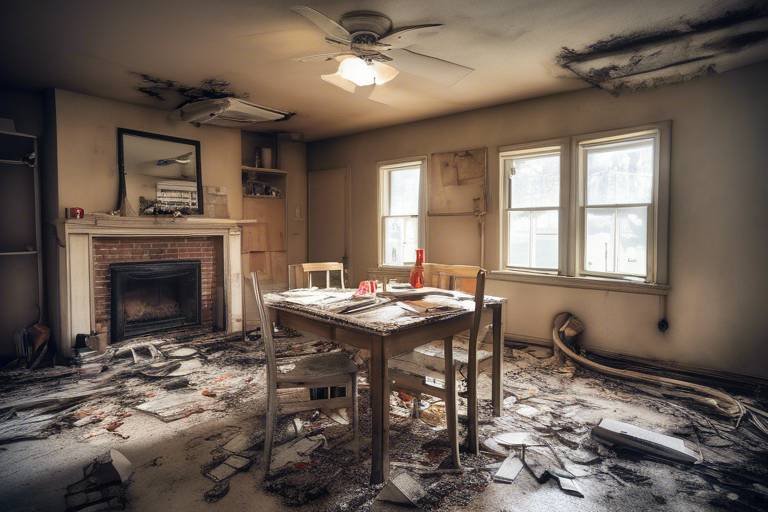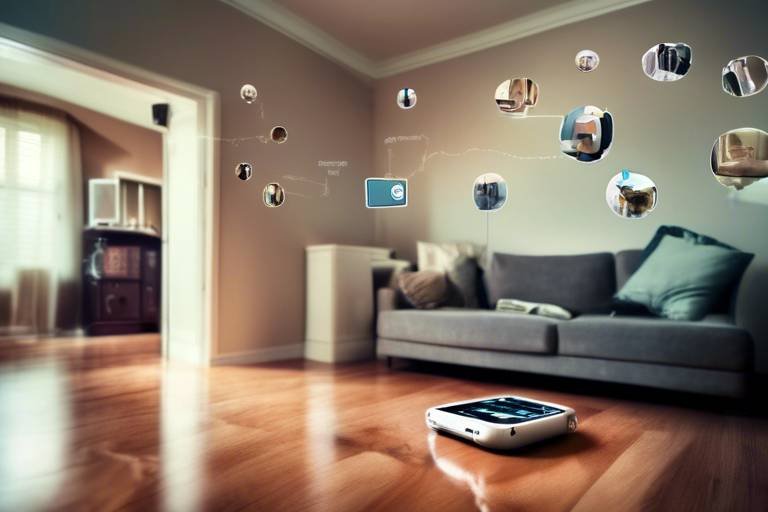Indoor and Outdoor Home Security – Essential Precautions
In today's world, ensuring the safety of our homes has become more crucial than ever. With increasing incidents of theft and vandalism, homeowners need to be proactive in their approach to security. This article explores vital measures for enhancing home security, covering both indoor and outdoor strategies to protect your property and ensure peace of mind for you and your family. Think of your home as a fortress; the stronger your defenses, the safer you feel. So, let's dive into the essential precautions that can help you fortify your haven!
Identifying potential threats is the first step in enhancing home security. Homeowners often overlook various risks that can put their property and loved ones in danger. Common vulnerabilities include unlocked doors, poorly lit areas, and even social media oversharing that can alert potential intruders to your absence. By recognizing these risks, you can take actionable steps to mitigate them. Here are some common risks:
- Unsecured entry points like doors and windows
- Poor visibility due to inadequate lighting
- Lack of surveillance systems
- Overgrown landscaping providing hiding spots
- Sharing too much information on social media
When it comes to indoor security, there are several essential precautions you can take to safeguard your living space. Alarm systems, surveillance cameras, and effective locking mechanisms are just a few of the tools at your disposal. These measures not only protect your belongings but also provide peace of mind for you and your family. Imagine coming home after a long day, knowing that your home is secure; that feeling is priceless!
Selecting an appropriate alarm system is crucial for indoor security. With various types of alarm systems available, it’s essential to choose one that fits your lifestyle and needs. Here are some popular options:
| Type of Alarm System | Features |
|---|---|
| Monitored Systems | 24/7 monitoring, immediate response |
| Unmonitored Systems | Sound alarm, notify you, no professional monitoring |
| Smart Alarm Systems | Remote access, smartphone notifications, integration with smart home devices |
By understanding the features of each system, you can make an informed decision that best suits your home security needs.
Smart home technology is revolutionizing the way we approach security. Imagine being able to monitor your home from anywhere in the world, all from your smartphone! Smart devices such as cameras, door locks, and motion sensors can be integrated into your security system, allowing for remote monitoring and control. This level of convenience not only enhances your security measures but also makes it easier to manage your home. It's like having a virtual guard watching over your property 24/7!
Maintaining your security systems is vital for ensuring their effectiveness. Just like a car needs regular oil changes, your security systems require periodic checks and updates to function optimally. Schedule routine inspections, test your alarms, and replace batteries as needed. Neglecting these tasks can leave you vulnerable, so make it a priority to keep your systems in top shape!
Surveillance cameras are a powerful deterrent against intruders and can provide valuable evidence in case of a breach. When considering surveillance options, you’ll find a variety of indoor and outdoor cameras available. From high-definition video to night vision capabilities, the right camera can significantly enhance your security. Imagine having a watchful eye over your home, even when you're not there; that’s the peace of mind that effective surveillance can provide!
Outdoor security is equally important for protecting your home. Strategies such as proper lighting, landscaping, and fencing can deter potential intruders. Think of your yard as the first line of defense; when it's well-maintained and secure, it sends a message that your home is not an easy target.
Motion-activated lights are an effective way to enhance outdoor security. These lights work by detecting movement and illuminating the area, making it difficult for intruders to go unnoticed. Imagine walking up to your home at night and suddenly being bathed in light; it’s a surefire way to scare off unwanted visitors!
Proper landscaping can serve as a security measure. By strategically designing your yard, you can minimize hiding spots for intruders and enhance visibility. Keep bushes trimmed and avoid planting tall shrubs near windows. Think of your yard as a stage; the more visibility you have, the less likely an intruder will feel comfortable making an entrance.
Q: What is the best type of alarm system for my home?
A: The best alarm system depends on your specific needs. Consider factors like monitoring preferences, budget, and whether you want smart home integration.
Q: How often should I check my security systems?
A: It's recommended to check your security systems at least once every few months to ensure everything is functioning properly.
Q: Can landscaping really improve home security?
A: Absolutely! Proper landscaping can eliminate hiding spots for intruders and improve visibility, making your home less appealing to potential threats.

Understanding Home Security Risks
When it comes to protecting your home, understanding the potential risks is the first step towards creating a secure environment. Home security risks can vary widely, and being aware of them can greatly enhance your ability to defend against them. Many homeowners often overlook certain vulnerabilities that can make their property an easy target for intruders. For instance, did you know that around 60% of burglaries occur during the day when most people are at work or school? This startling statistic highlights the importance of being proactive about your home security.
Common risks include:
- Burglaries: These can happen at any time, but they are especially prevalent in neighborhoods with a lack of visible security measures.
- Vandalism: This can range from graffiti to property damage, often targeting homes that appear unoccupied.
- Fire Hazards: While not a traditional security risk, fires can devastate a home and its contents, making fire safety measures equally important.
- Natural Disasters: Events like floods or earthquakes can compromise your home’s structural integrity, leading to security vulnerabilities.
It’s essential to evaluate your home's vulnerabilities, which can include poor lighting, lack of security systems, and even the positioning of your landscaping. For instance, overgrown bushes can provide hiding spots for potential intruders, while inadequate outdoor lighting can make it easier for them to approach your home unnoticed. To mitigate these risks, consider conducting a thorough security assessment of your property. This can involve walking around your home and taking note of any areas that seem less secure or that could be improved.
In addition to physical vulnerabilities, it’s also important to consider the human factor. Many burglaries are crimes of opportunity; if a thief notices an open window or a door that isn’t locked, they might take advantage of the situation. Therefore, educating all family members about the importance of securing doors and windows can significantly reduce risks.
Furthermore, understanding the types of criminals in your area can also inform your security strategy. For example, are they typically opportunistic thieves looking for easy targets, or are they more organized and skilled? Knowing this can help you tailor your security measures accordingly. For instance, if your neighborhood has seen a rise in organized break-ins, investing in a comprehensive security system may be more critical than if you’re dealing with sporadic, low-level vandalism.
In summary, understanding home security risks is about being aware of both the physical and human elements that can compromise your safety. By identifying these vulnerabilities and taking proactive steps to address them, you can create a safer environment for you and your family. Remember, the goal isn’t just to react to threats but to anticipate and prevent them before they occur.

Indoor Security Measures
When it comes to safeguarding your home, indoor security measures are absolutely essential. Think of your home as a fortress; without the right defenses, it's vulnerable to threats that can compromise your peace of mind. Whether you're at home or away, implementing effective security measures can significantly reduce the risk of intrusions. From alarm systems to surveillance cameras, the right precautions can make all the difference in protecting your living space and your loved ones.
One of the first steps in enhancing your indoor security is to install a reliable alarm system. This is your first line of defense against potential threats. Alarm systems come in various forms, each with unique features that cater to different needs. For example, some systems are designed to alert you to unauthorized entry, while others may include fire and carbon monoxide detection. It's crucial to choose a system that not only fits your budget but also meets the specific requirements of your household.
When selecting an alarm system, consider the following factors:
- Type of Monitoring: Decide between self-monitoring and professional monitoring. Self-monitoring allows you to receive alerts on your smartphone, while professional monitoring provides 24/7 surveillance by trained personnel.
- Installation: Some systems are DIY-friendly, while others may require professional installation. Evaluate your comfort level with technology and installation procedures.
- Features: Look for features such as mobile app access, remote control, and integration with smart home devices. These can enhance convenience and security.
Another significant aspect of indoor security is the integration of smart home technology. Imagine being able to monitor your home from anywhere in the world with just a tap on your phone. Smart home devices, such as smart locks and cameras, allow for remote access and control, providing an added layer of security. For instance, you can lock your doors, view live camera feeds, and receive alerts about any unusual activity, all while sipping coffee at your favorite café.
Integrating smart devices into your security system is not just about convenience; it’s also about efficiency. Many smart devices can communicate with each other, creating a cohesive security network. For example, when your doorbell camera detects motion, it can trigger your indoor lights to turn on, making it less likely for intruders to approach your home unnoticed. The synergy between these devices can significantly enhance your overall security strategy.
Just like any other system in your home, security systems require regular maintenance to ensure they function effectively. Imagine driving a car without ever checking the oil or tires; eventually, something will go wrong. The same principle applies to your security system. Schedule regular checks to test your alarms, replace batteries, and update software. This proactive approach will keep your security measures in top shape and ready to protect your home when it matters most.
Lastly, consider the importance of effective surveillance solutions. Surveillance cameras act as a deterrent for potential intruders and provide valuable evidence in case of a breach. Whether you opt for indoor cameras to monitor activity within your home or outdoor cameras to keep an eye on your property, these devices play a crucial role in your security strategy. Many modern cameras come equipped with features such as night vision, motion detection, and cloud storage, making them an invaluable asset in your indoor security arsenal.
In conclusion, enhancing indoor security is a multifaceted approach that involves selecting the right alarm system, integrating smart home technology, maintaining your systems, and employing effective surveillance solutions. By taking these steps, you can create a secure environment that not only protects your property but also gives you peace of mind.
Q: What is the best type of alarm system for my home?
A: The best type of alarm system depends on your specific needs. Consider factors like monitoring options, installation preferences, and desired features when making your choice.
Q: How often should I maintain my security systems?
A: It's recommended to perform maintenance checks at least twice a year to ensure everything is functioning correctly.
Q: Can I integrate my security system with other smart home devices?
A: Yes, many security systems are designed to work seamlessly with other smart home devices, enhancing your overall security and convenience.

Choosing the Right Alarm System
When it comes to securing your home, selecting the right alarm system can feel like navigating a maze. With so many options available, how do you choose the one that best fits your needs? The first step is to understand the different types of alarm systems on the market. You have traditional wired systems, which offer reliability but can be a hassle to install, and wireless systems that provide flexibility and ease of installation. But that’s just the tip of the iceberg!
Next, consider the features that are most important to you. Do you want a system that integrates with your smart home devices? Or perhaps a system that includes 24/7 monitoring? Here are some key features to look for:
- Remote Access: The ability to monitor your home from anywhere using your smartphone.
- Motion Sensors: These detect movement and can alert you instantly.
- Video Surveillance: Cameras that provide live feeds and recordings, giving you peace of mind.
- Environmental Sensors: Alerts for smoke, carbon monoxide, or flooding can be lifesavers.
Don’t forget to consider the installation process. Some systems are DIY-friendly, while others may require professional installation. If you're not particularly tech-savvy, opting for a system that offers professional help might be the way to go. It’s like assembling a complicated piece of furniture; sometimes, it’s best to have a pro handle it!
Another crucial factor is the monitoring options. Some systems come with self-monitoring capabilities, where you’ll receive alerts directly to your phone. Others offer professional monitoring, where a team will respond to alerts and contact the authorities if necessary. Think about what level of involvement you prefer. Would you rather be alerted and handle things yourself, or would you feel more secure knowing that professionals are on standby, ready to act?
Finally, budget plays a significant role in your decision-making process. While you might be tempted to go for the cheapest option, remember that investing in a reliable system can save you money in the long run by preventing theft or damage. It’s like buying a good pair of shoes; you want something that will last and keep you comfortable rather than something that will fall apart after a few wears!
In conclusion, choosing the right alarm system involves assessing your unique needs, understanding the features available, and considering your budget. Take your time, do your research, and don’t hesitate to ask for recommendations from friends or family. After all, your home is your sanctuary, and it deserves the best protection possible.
1. What is the best type of alarm system for a home?
There isn’t a one-size-fits-all answer, as the best system depends on your specific needs, whether it’s a wired or wireless system, and the features you prioritize.
2. Can I install an alarm system myself?
Yes, many modern alarm systems are designed for DIY installation. However, if you're not comfortable with technology, you might want to consider professional installation.
3. How much does a good alarm system cost?
Costs can vary widely based on the system's features and monitoring options, but expect to invest anywhere from a few hundred to several thousand dollars.
4. Do I need professional monitoring?
While self-monitoring is an option, professional monitoring provides an extra layer of security, ensuring that help is dispatched immediately in an emergency.
5. How often should I test my alarm system?
It’s recommended to test your alarm system at least once a month to ensure it’s functioning properly.

Smart Home Integration
In today's fast-paced world, has become a game-changer for enhancing indoor security. Imagine having the ability to monitor your home from anywhere in the world, all with just a few taps on your smartphone. This technology allows homeowners to connect various devices, creating a comprehensive security system that can be controlled remotely. But how does it work? Let’s dive into the fascinating world of smart home security.
At its core, smart home integration involves linking devices such as security cameras, smart locks, and alarm systems to a central hub, often your smartphone or tablet. This not only provides convenience but also enables real-time alerts and notifications. For instance, if an intruder triggers your alarm system, you’ll receive an instant notification, allowing you to act swiftly. You can even view live footage from your security cameras, ensuring that you’re always in the loop.
Moreover, smart home integration offers a level of customization that traditional security systems simply can't match. You can set schedules for your lights to turn on and off, simulate your presence at home, or even receive alerts when your children arrive home from school. This level of control is empowering, making you feel safer and more secure in your own space.
To give you a clearer picture, here’s a quick comparison of some popular smart home devices:
| Device Type | Features | Benefits |
|---|---|---|
| Smart Cameras | HD video, night vision, motion detection | Real-time monitoring, deterrence |
| Smart Locks | Remote locking/unlocking, keyless entry | Convenience, enhanced security |
| Smart Alarms | Mobile alerts, integration with other devices | Immediate response, peace of mind |
Additionally, the integration of smart devices can lead to improved energy efficiency. For example, smart lights can be programmed to turn off when no one is home, saving you money on your energy bills while also enhancing security. It’s a win-win situation!
However, it’s essential to choose devices that are compatible with one another. Look for systems that support common protocols like Zigbee or Z-Wave, ensuring seamless communication between devices. This not only simplifies the installation process but also enhances the overall functionality of your smart home security system.
In conclusion, integrating smart home technology into your security measures is not just a trend; it’s a necessity in our increasingly connected world. With the ability to monitor, control, and customize your security system from anywhere, you can enjoy unparalleled peace of mind. So, why wait? Start exploring the vast array of smart devices available today and take your home security to the next level!

Regular Maintenance of Security Systems
When it comes to home security, having the latest and greatest devices is just the beginning. The real magic happens when you commit to regular maintenance. Think of your security system as a car; if you don’t change the oil or rotate the tires, it won’t perform when you need it most. Regular checks and updates are essential for ensuring that your security measures are not only functioning but also effective against potential threats.
First off, testing your alarm systems should be a priority. Most systems come with a user manual that outlines how often you should conduct tests. This could range from monthly to quarterly, depending on the manufacturer’s recommendations. Make it a habit to schedule these tests, and consider setting reminders on your phone or calendar. During these tests, check all components, including sensors, keypads, and sirens, to ensure they are working correctly.
Next, don’t overlook the importance of updating your software. Many modern security systems come with smart technology that requires regular software updates to protect against vulnerabilities. Just like your smartphone or computer, these updates often include patches that fix security flaws. So, take a moment to check for updates and install them promptly. This simple step can significantly enhance your system's resilience against cyber threats.
Another crucial aspect of maintenance is cleaning your surveillance cameras. Dust, rain, and other environmental factors can blur the lenses and obstruct the view, rendering your cameras ineffective. Make it a point to wipe down the lenses and check the positioning of your cameras regularly. This ensures that you capture clear footage, which is invaluable if you ever need to review recordings or provide evidence to authorities.
Also, consider the battery life of your devices. Many security systems rely on battery power, and if these batteries die, your system is effectively useless. Regularly check battery levels and replace them as needed. Some systems even send alerts when batteries are running low, but it’s always good to have a proactive approach. You might want to keep a supply of batteries handy, so you’re never caught off guard.
Finally, don’t forget to review your security protocols periodically. As your life changes—whether it’s a new job, a growing family, or even a change in neighborhood dynamics—your security needs may evolve as well. Take the time to assess whether your current system still meets your needs or if it’s time to upgrade or add new features. This could mean adding more cameras, integrating new smart home devices, or even enhancing your alarm system.
In summary, regular maintenance of your security systems is not just a good practice; it’s a necessity. By staying proactive and attentive, you can ensure that your home remains a safe haven for you and your loved ones. Remember, an ounce of prevention is worth a pound of cure!
- How often should I test my security system?
It's recommended to test your security system at least once a month. This ensures all components are functioning properly. - What should I do if my security camera is not recording?
Check the power supply, ensure the software is updated, and verify the camera settings. If issues persist, consult the user manual or contact customer support. - How can I ensure my smart security devices are secure?
Regularly update the software, use strong passwords, and consider enabling two-factor authentication where available.

Effective Surveillance Solutions
When it comes to safeguarding your home, are a game changer. Think of surveillance cameras as the watchful eyes that never blink, providing you with peace of mind and a sense of security. With the right setup, these devices can deter potential intruders and offer invaluable evidence should a break-in occur. But with so many options available, how do you choose the best surveillance system for your needs? Let's dive into some of the most popular solutions.
First off, you have the traditional closed-circuit television (CCTV) systems, which have been around for quite some time. These systems are hardwired and can be quite effective for monitoring specific areas around your home. However, they often require professional installation and can be more costly. On the other hand, wireless cameras have surged in popularity due to their ease of installation and flexibility. You can place them almost anywhere, and many models come with features like night vision and motion detection.
Another exciting option is smart cameras, which integrate seamlessly with your home automation systems. These cameras allow you to monitor your property remotely through your smartphone or tablet, giving you real-time updates and alerts. Imagine being on vacation and receiving a notification that someone is lingering near your front door—now that's a powerful feature! Some smart cameras even offer two-way audio, allowing you to communicate with visitors or potential intruders.
To help you compare different surveillance options, here’s a simple table summarizing their features:
| Camera Type | Installation | Remote Access | Features |
|---|---|---|---|
| CCTV | Professional | No | High-quality video, reliable |
| Wireless | DIY | Yes | Flexibility, easy to install |
| Smart Cameras | DIY | Yes | Real-time alerts, two-way audio |
Additionally, the placement of your cameras is crucial. You want to ensure that they cover key entry points such as doors and windows while also monitoring areas that may be less visible. A well-placed camera can act as a deterrent simply by being visible. Think of it as a watchdog—the more visible it is, the less likely someone is to approach your home with ill intentions.
Lastly, don’t forget about the importance of storage. Many modern surveillance systems offer cloud storage options, allowing you to save footage without worrying about physical storage devices. This can be incredibly handy if you ever need to retrieve footage for any reason. Just imagine having access to recorded evidence at your fingertips—talk about a confidence booster!
- What is the best type of surveillance camera for home use? It depends on your specific needs. Wireless and smart cameras are popular for their flexibility and remote access features.
- Can I install a surveillance system myself? Yes, many modern systems are designed for easy DIY installation, especially wireless and smart cameras.
- How long can I store surveillance footage? This varies by system. Cloud storage typically allows for longer retention periods compared to local storage.

Outdoor Security Strategies
When it comes to safeguarding your home, outdoor security is just as crucial as the measures you take indoors. After all, the exterior of your home is the first line of defense against potential intruders. By implementing effective outdoor security strategies, you can significantly enhance the safety of your property and create a sense of peace for you and your family. Let’s dive into some key strategies that can make a big difference.
One of the most effective ways to deter unwanted visitors is through proper lighting. Imagine walking up to a house that is brightly lit; it’s not inviting for anyone with bad intentions. Motion-activated lights are particularly useful because they turn on automatically when someone approaches, catching the attention of both the homeowner and the intruder. Not only do these lights help illuminate dark areas, but they also serve as a clear warning that you’re watching. It's like having a spotlight on anyone who dares to come too close!
In addition to lighting, landscaping plays a pivotal role in your outdoor security. Believe it or not, how you design your yard can either enhance or compromise your safety. Overgrown bushes and trees can provide perfect hiding spots for intruders, making it easier for them to approach your home unnoticed. Instead, consider strategic landscaping that minimizes these hiding spots. For example, keep shrubs trimmed to a height of no more than three feet and avoid planting trees close to windows. This not only improves visibility but also creates a more open and inviting space.
Fencing is another vital component of outdoor security. A sturdy fence can act as a physical barrier that deters burglars and keeps unwanted visitors at bay. When choosing a fence, consider materials that are difficult to climb and ensure that the height is adequate—typically, a fence should be at least six feet tall. Additionally, installing a gate with a secure lock adds an extra layer of protection. Remember, a well-maintained fence sends a message that you take security seriously.
Another often-overlooked strategy is neighborhood awareness. Engaging with your neighbors can create a sense of community vigilance. Forming a neighborhood watch program can help ensure that everyone is looking out for one another. When neighbors know each other, they are more likely to report suspicious activities. Think of it as having a group of watchful eyes; the more people involved, the less likely intruders will feel comfortable targeting your area.
To summarize, here are some key outdoor security strategies that you can implement:
- Install motion-activated lighting to illuminate dark areas and deter intruders.
- Maintain your landscaping to minimize hiding spots and enhance visibility.
- Invest in a sturdy fence with a secure lock to create a physical barrier.
- Engage with your neighbors to foster a sense of community vigilance.
By focusing on these outdoor security strategies, you can create a safer environment for your home. Remember, it’s not just about having security measures in place; it’s about making your property less appealing to potential threats. The more proactive you are, the more secure you and your family will feel in your own space.
Q: How effective are motion-activated lights?
A: Motion-activated lights are highly effective as they not only illuminate dark areas but also serve as a deterrent by alerting homeowners and neighbors of any movement.
Q: What type of fence is best for security?
A: A sturdy wooden or vinyl fence that is at least six feet tall is ideal. Ensure it has a secure locking mechanism to prevent unauthorized access.
Q: How can I engage my neighbors in security efforts?
A: Consider organizing a neighborhood watch program where residents can share information about suspicious activities and look out for one another.
Q: Does landscaping really impact security?
A: Yes! Proper landscaping can minimize hiding spots for intruders and enhance visibility, making your home less appealing to potential threats.

Utilizing Motion-Activated Lighting
When it comes to enhancing your home's security, motion-activated lighting is a game changer. Imagine stepping outside at night and being greeted by a sudden burst of light as you approach your home. This not only illuminates your path but also serves as a powerful deterrent against potential intruders. Intruders often prefer to operate in the shadows, and by installing these lights, you effectively turn your yard into a well-lit area that makes them think twice before attempting to breach your property.
So, how do motion-activated lights work? These lights are equipped with sensors that detect movement within a certain range. Once movement is detected, the lights turn on automatically, flooding the area with bright light. This feature can be particularly useful for driveways, walkways, and entrances. You can position them strategically to cover blind spots around your home, ensuring that every corner is well-lit and monitored.
Moreover, the installation of motion-activated lighting can be both cost-effective and energy-efficient. Since these lights only activate when needed, you won't waste energy keeping them on all night. Many modern motion lights come with adjustable settings, allowing you to customize the sensitivity and duration of the light. For instance, you could set your lights to stay on for a few minutes after detecting movement, providing ample time for you or your guests to safely navigate your property.
In addition to enhancing security, these lights can also improve the overall ambiance of your outdoor space. By strategically placing them around your garden or patio, you can create a warm and inviting atmosphere for evening gatherings. Just imagine hosting a barbecue with your friends, and as the sun sets, your beautifully lit yard becomes the perfect backdrop for fun and laughter.
However, it’s essential to consider a few factors when choosing motion-activated lighting:
- Range: Look for lights that cover a sufficient area, especially if you have a large yard.
- Brightness: Ensure the lumens are adequate to illuminate your space effectively.
- Weather Resistance: Opt for lights that can withstand outdoor conditions, such as rain and snow.
- Power Source: Decide between hardwired or solar-powered options based on your needs.
In conclusion, utilizing motion-activated lighting is a proactive step towards safeguarding your home. Not only does it enhance security by illuminating dark areas, but it also adds a level of convenience and aesthetic appeal to your outdoor spaces. By investing in these lights, you're not just purchasing a product; you're securing peace of mind for you and your loved ones.
Q1: How do I choose the right location for motion-activated lights?
A1: Ideally, you should place them near entry points, driveways, and dark areas of your yard to maximize visibility and security.
Q2: Can I install motion-activated lights myself?
A2: Yes, many motion-activated lights are designed for easy installation and come with clear instructions. However, if you opt for hardwired options, consider hiring a professional to ensure proper installation.
Q3: Will motion-activated lights attract unwanted attention?
A3: While these lights can draw attention, they primarily serve as a deterrent. The sudden illumination can startle potential intruders, making them think twice about their actions.
Q4: Are solar-powered motion-activated lights effective?
A4: Yes, solar-powered options can be very effective, especially in areas with ample sunlight. They are also energy-efficient and cost-effective in the long run.

Landscaping for Security
When it comes to home security, many people focus primarily on alarms and surveillance cameras, but have you ever considered how your landscaping can play a pivotal role in protecting your property? Just like a well-designed fortress, your yard can be an effective barrier against intruders. By strategically planning your landscaping, you can create an environment that enhances visibility and reduces hiding spots, making it more challenging for unwanted visitors to approach your home unnoticed.
Start by evaluating your current landscaping. Are there dense shrubs or tall hedges that obscure the view of your home from the street? While these may provide privacy, they can also serve as perfect hiding spots for intruders. Consider trimming back these overgrown plants or replacing them with lower-growing varieties that allow for better visibility. Open sightlines not only deter potential burglars but also make your property more inviting and safe.
Incorporating thorny plants such as roses or holly around windows and entry points can also act as a natural deterrent. These plants not only beautify your home but also create a physical barrier that makes it less appealing for someone to attempt to break in. Imagine trying to sneak through a bush of thorns—it's not exactly the most comfortable experience! Moreover, using gravel or mulch instead of grass in certain areas can help you hear footsteps, adding another layer of security.
Another effective landscaping strategy is to consider the placement of trees. While trees provide shade and aesthetic appeal, large trees near windows can offer cover for intruders. Instead, opt for trees that are further away from the house, and if you do have trees close to your home, ensure they are trimmed back regularly to eliminate potential hiding spots. Additionally, planting trees with a higher trunk and a canopy that starts later can help maintain visibility.
Lighting is another crucial aspect of landscaping that can significantly enhance your home security. By installing solar-powered lights along pathways and near entry points, you not only illuminate your yard but also deter intruders who prefer to operate in the shadows. Motion-activated lights can be particularly effective, as they surprise and startle anyone who may be lurking nearby. Just imagine walking up to a house that’s brightly lit—wouldn’t you think twice before approaching?
In conclusion, your landscaping choices can greatly impact your home’s security. By creating an environment that prioritizes visibility, incorporates natural deterrents, and utilizes effective lighting, you can significantly reduce the risk of a break-in. So next time you’re thinking about sprucing up your yard, remember that a little planning can go a long way in keeping your home safe.
- How can I improve the security of my yard without sacrificing aesthetics?
Consider using low-growing plants for privacy, adding lighting, and incorporating thorny bushes near entry points. This way, you enhance security while maintaining a beautiful landscape.
- What types of plants are best for security landscaping?
Opt for thorny plants, low shrubs, and trees with high trunks. These can deter intruders while also providing visual appeal.
- Are motion-activated lights worth the investment?
Absolutely! They not only deter potential intruders but also provide you with peace of mind by illuminating your property when movement is detected.
Frequently Asked Questions
- What are the most common indoor security risks?
Indoor security risks often include burglary, unauthorized access, and theft. Common vulnerabilities are unlocked doors and windows, inadequate alarm systems, and lack of surveillance. By identifying these risks, homeowners can implement effective measures to protect their living spaces.
- How do I choose the right alarm system for my home?
Choosing the right alarm system depends on your specific needs. Consider factors like the size of your home, the types of sensors you need, and whether you want a monitored system. Research various options, read reviews, and even consult with security professionals to find the best fit for your situation.
- What are the benefits of smart home integration for security?
Smart home integration allows you to monitor and control your security systems remotely, providing peace of mind when you're away. Features like smartphone alerts, video feeds, and smart locks enhance your overall security, making it easier to respond to potential threats in real-time.
- How often should I maintain my security systems?
Regular maintenance is crucial—ideally, check your security systems every 3 to 6 months. This includes testing alarms, checking camera functionality, and updating software. Keeping your systems in top shape ensures they work effectively when you need them most.
- What types of surveillance cameras are best for home security?
When choosing surveillance cameras, look for options that offer high resolution, night vision, and motion detection. Indoor cameras should be discreet, while outdoor cameras need to be weatherproof and durable. Consider whether you prefer wired or wireless systems based on your setup.
- How can I improve outdoor security around my home?
Improving outdoor security can be achieved through several strategies, such as installing motion-activated lighting, using sturdy fencing, and maintaining clear sightlines in your landscaping. These measures deter intruders and enhance the overall safety of your property.
- What is the role of motion-activated lighting in home security?
Motion-activated lighting plays a significant role in deterring unwanted visitors. These lights automatically illuminate when movement is detected, startling potential intruders and making them more visible. It's an affordable and effective way to enhance your home's security.
- How can landscaping contribute to home security?
Strategic landscaping can minimize hiding spots for intruders and improve visibility around your property. Use low shrubs and well-placed trees to maintain an open view, ensuring that potential threats are easily spotted. A well-maintained yard not only enhances curb appeal but also serves as a security measure.


















